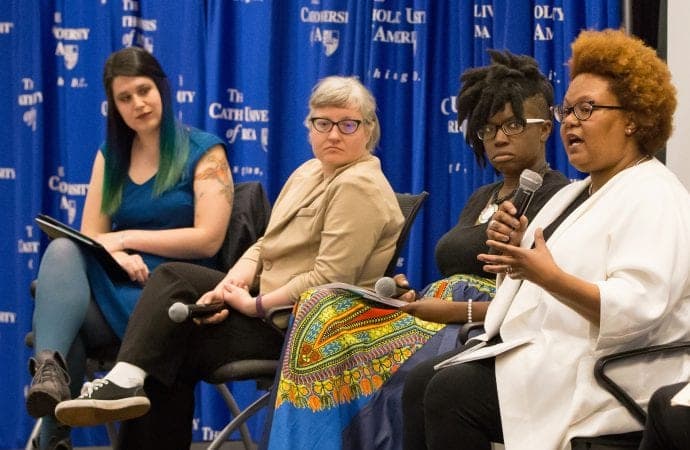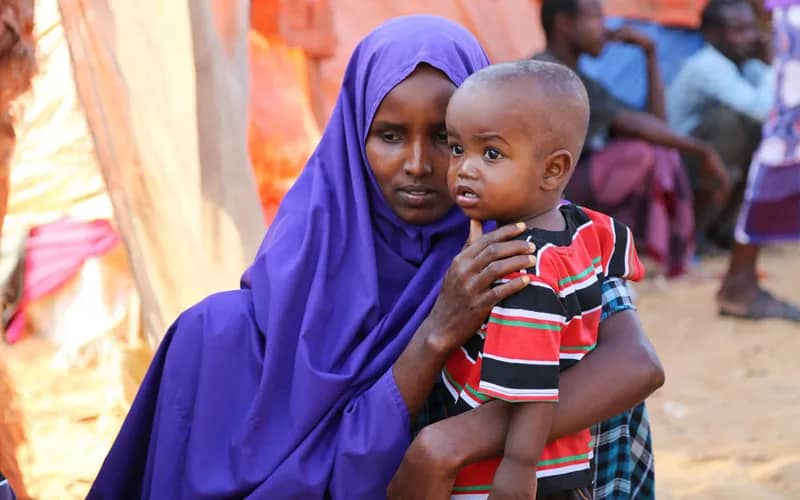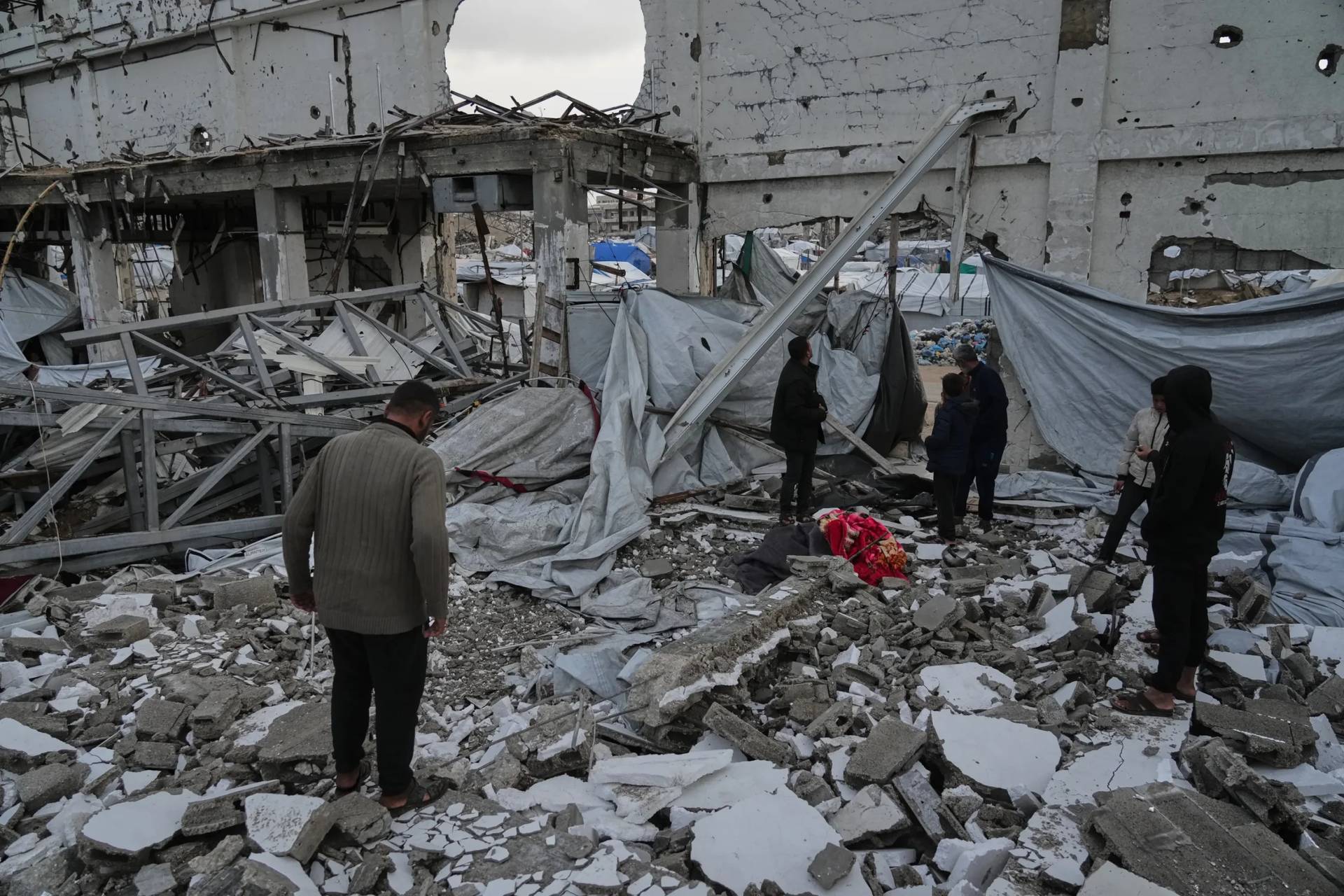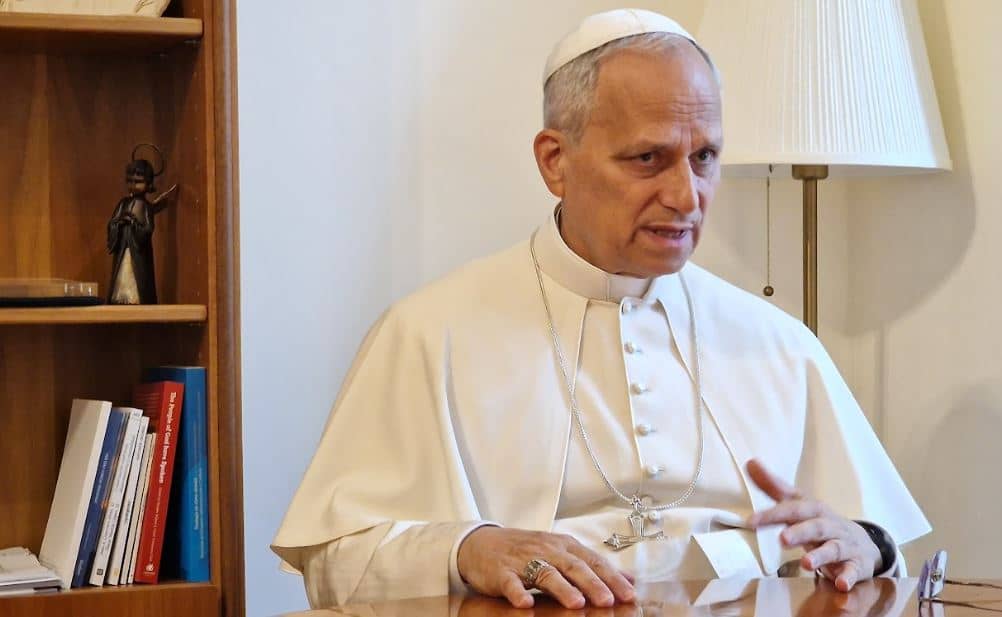[Editor’s Note: Cessilye Smith is a doula, or birth companion, and a homeschooling mother who somehow found herself as a professional board member for organizations such as Rehumanize International and Help Assist Her. She also sits as VP for New Wave Feminists. She says building bridges that lead to solution-based life affirming outcomes is the legacy she wishes to leave her children. She spoke to Charles Camosy about how the pro-life movement must expand outside of traditional boundaries.]
Camosy: I’ve been following your story and your work for over a year now, but many Crux readers may not be as familiar. Can you say a little about your history and how it has led to you doing the work you are doing today?
Smith: My journey began about 4 years ago when attending a birth convention in Fort Worth, Texas. At this convention I had the privilege of hearing Jennie Joseph speak on the disproportionate rate at which black women and our babies are dying.
Did you know that black women are 4 times more likely to be harmed or die in childbirth or that black babies die at 3 times the rate of white babies before they reach one year of age? Well, it broke me. I was oblivious to this.
I was a part-time doula with a newborn and I lived in this world completely blind to such disparities. I left that day with a broken heart and a desire to learn more about infant/maternal mortality and abortion specifically within the black community. I have always considered myself pro-life, but learning these stats took pro-life on a whole other level.
This is not the typical background of someone who is involved in pro-life activism, is it?
No, it’s not. I started off shouting abortion statistics in the black community, and now when I see people doing that it actually makes me cringe. It took me a while to get to the root. No one wants to talk about the root, that being systemic racism.

That R-word tends to make people cringe because they take it personally, but it isn’t personal at all. It’s historical and has affected us in a devastating way. Implicit bias is a product of it and because of it, black people are dying.
I will say this though, I’m encouraged to witness people actually get it. My focus has evolved over time to reach women and babies that are dying even after they have chosen life. We cannot pretend that there is no connection here. If we are pro-life, then this is something we must focus on.
What can the more traditional pro-life movements learn from racial justice activists?
There is so much to learn. Racial justice activists have a tendency to see the many layers at play. These layers represent the various players in the game of abortion.
They first see history that is rooted in a supremacy that put one type of person above all others. I’m being selective with my words because I truly want people to hear me. They see how supremacy influences policy and systems that have been in play for centuries.
It’s not about placing blame, it’s about acknowledging the damage that has been done and coming up with solutions. Racial justice activists see a history of black women’s bodies being used for economic gain from the moment they were snatched from their land.
RELATED: Both sides on abortion debate ponder if pro-lifers can also be feminists
Understanding the why behind their actions will help pro-life activists gain perspective and understanding without compromise. They see a woman with two walls closing in on her. One wall is systemic racism and the other is hopelessness.
What many traditional pro-life activists do is acknowledge and attempt to bring hope in a desperate situation. That’s beautiful, but the problem is that systemic racism is insidious in nature. That’s why so many tend to be blind to it…. those who are NOT marginalized DO NOT see it.
Polls generally find that poor people of color in the United States are more skeptical of abortion and euthanasia than are middle- and upper-class-whites. Do you have thoughts as to why this is the case?
My initial thoughts regarding this issue lies in a deep history of people of color taking care of our families. There is a strong faith in God and responsibility to care for our own. I believe that is something that is rooted in the fabric of our history that goes well beyond the trans-Atlantic slave trade.
Abortion is not natural, nor is euthanasia, within our communities. There is something to be said for the amount of resilience that the poor face. Tenacity, grit and beauty is how I would describe this community. One of which all people should emulate.
I’ve noticed that, despite these overlapping views, the traditional pro-life movements in the United States are overwhelmingly white. What do you think is necessary for the movements to become more racially diverse?
Well, first stop quoting statistics on the black community without looking at the systems that created those statistics to begin with. It’s clear that there is more at play here than Planned Parenthood’s eugenic past when women who have chosen life are not only losing their babies but are dying as well, disproportionately.
I know many pro-life activists that are genuinely doing amazing work. But when the public eye sees the pro-life movement fighting to end abortion without looking at the root, then you will always get the side eye from the black community.
I think many fail to realize that the father of gynecology perfected his craft by experimenting on black women, namely Anarcha, Betsey and Lucy, with no anesthesia. The Tuskegee Syphilis Experiments were conducted between 1932-1972 … legally. We have a history that must be acknowledged, and its roots have lingered even amongst healthcare practices.
Listening to black community activists, recognizing whatever privilege you may possess and putting your resources toward life affirming projects going on around the country is what will help the pro-life movement gain some respect, momentum and diversity. Otherwise the divide will continue, and more women and children will die.
One more thing. I have found that the moment I stopped vilifying the other side and begin having actual dialogue, that was the moment they began to hear me.
You’ve got to get people to hear you first in order to establish change. But to get people to hear, you must first listen. Not listening to respond, but listening to understand.














